All about Shepherdia
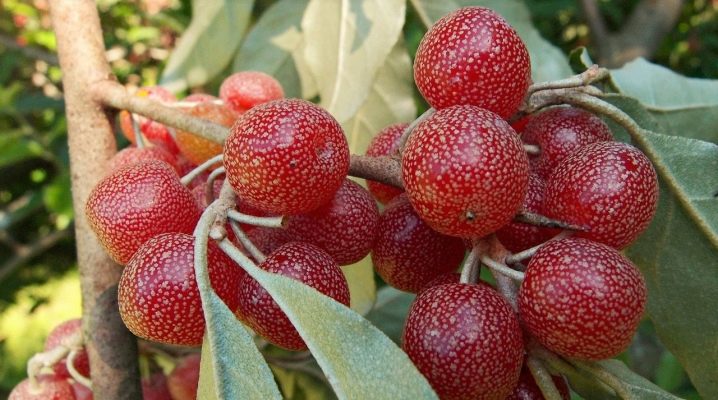
Shepherdia (Latin name - Shepherdia) is a plant belonging to the Lokhovy family. This type of plant includes three main types of spreading shrubs that are not too high (maximum size reaches approximately 10 meters), which are native to North America.
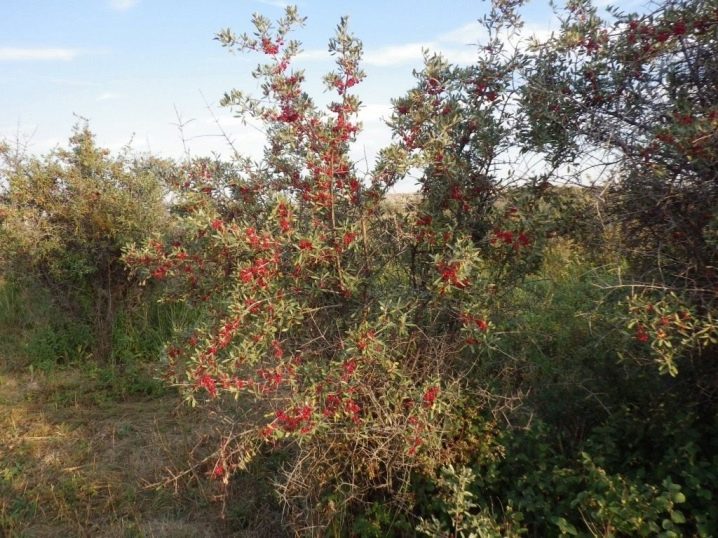
What is this plant?
The fruits of the Shepherdia shrub are berries that have a bright red color with barely noticeable splashes of white. Shepherdia berries are edible, but they have a specific taste. Bitter sour fruits are not to everyone's liking, despite the fact that they contain a large amount of vitamins and useful microelements that help to strengthen the human immune system and maintain his health.
If they are eaten unprocessed, then the mouth feels dry, which not everyone likes. Also, the fruits of shepherdia are popular not only among people: they are often consumed by some wild animals. Most often these are bears.

In some cases, shepherdia is called "soapy berry" or "bison berry". In appearance, the fruits of this plant are very reminiscent of sea buckthorn, so you can often hear how the fruits are also called "red sea buckthorn". After all, they differ only in color, and the size of the berries and the very appearance of the bush is quite similar to sea buckthorn.
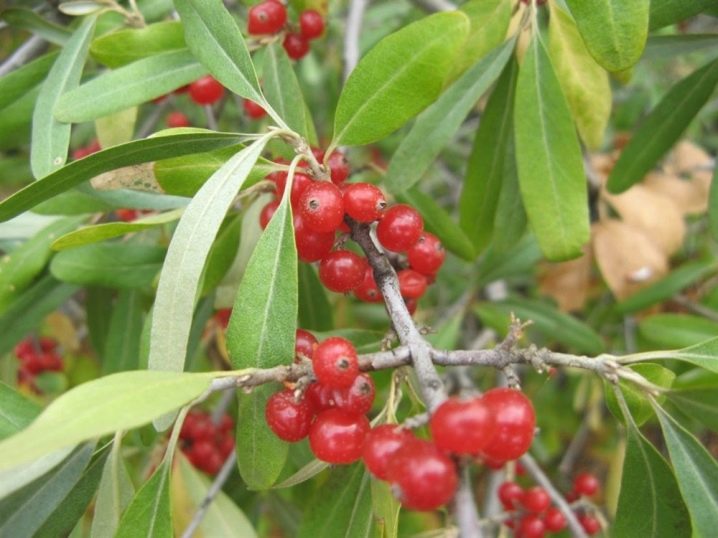
You can start describing a plant with its height. In an adult state, it can be from three meters, sometimes it reaches a height of 7-10 meters. The branches of the shrub are rather thin, covered with a grayish-yellow bark with a rough surface. Branches are strongly branched along their entire length, long spines grow on them. In addition, the branches of the bush have the ability to intertwine very densely and bend towards the surface of the earth. As a result, a hedge can form, which is almost impossible to pass due to the too dense interlacing of the branches and the presence of sharp thorns.
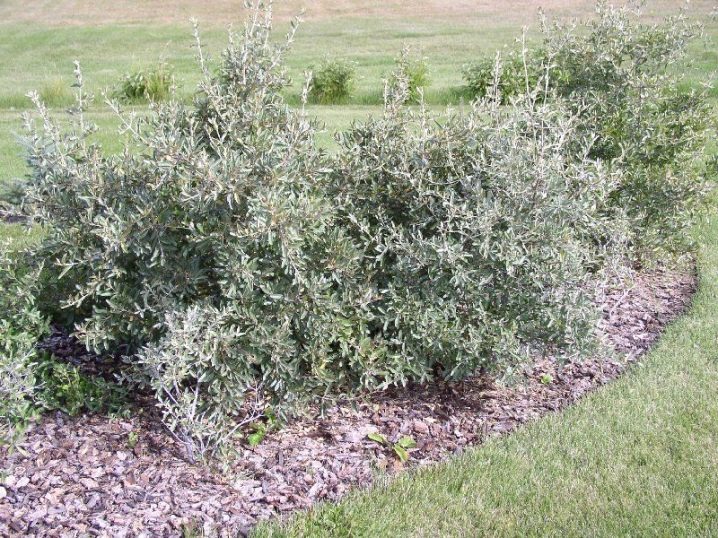
The shrub has oval or lanceolate leaves of bright green color. The length of the leaf plate is approximately 5-8 centimeters. The leaves may have a silvery bloom, arising from small scaly villi.

The plant blooms from the end of March. The flowering process takes place before leaves appear on the shrub. Flower buds are attached to the branches thanks to short pedicels. There are a lot of buds, they cover all branches very tightly. Shepherdia is a dioecious shrub, therefore, you can find plants with exclusively male or only female flowers.
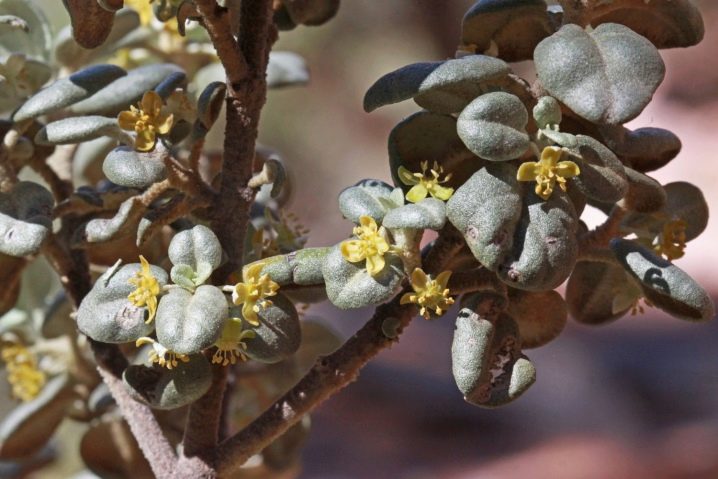
In order for plants to bear fruit successfully, it is necessary to plant at least one male specimen per ten female bushes on the site. Female buds usually open somewhat earlier than male buds. Thanks to insects, pollination occurs, after which the ripening of small round-shaped berries takes place.
The surface of the red berries is covered with small white dots, inside there is one small seed, flattened in shape. Since the fruits of Shepherdia have a peculiar taste, they are often not consumed raw. Typically, berries are used to make stewed fruit, preserves, jellies, jams or marmalades. In order for the fruits to acquire a sweeter taste, they are stored on the branches of the bush for the beginning of the frost period.Low temperatures promote sweetness. Ripe berries can be easily chipped off the branches. A grown bush in one season can produce up to 15-20 kilograms of ripe fruits. Fruiting in Shepherdia bushes usually occurs 2 or 3 years after planting.

The plant easily tolerates frosts, so the winter hardiness zone is wide enough. Shepherdia does not require shelter for the winter. Therefore, it can be successfully grown even in cool regions.
Views
In the genus of these plants, there are evergreen varieties and deciduous ones. There are three main types of this shrub.
Silvery
Shepherdia silvery got its name because of its white pubescence. It is observed on young twigs and leaves from the outer and seamy sides. This subspecies grows quite large, and can reach a height of over 6 meters. The flowering period usually begins in April, in the middle of the month. The female specimens bloom in single buds, while the male specimens bloom in small spikelets. The berries ripen in September. They can be yellow, orange or reddish depending on the particular variety.
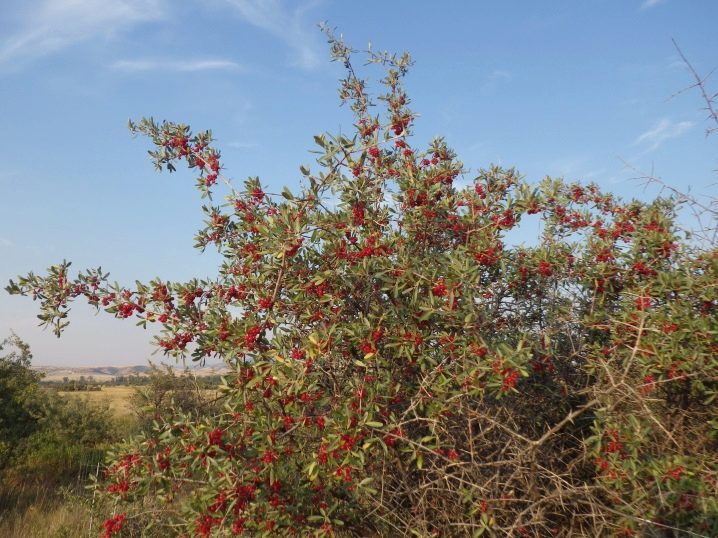
The most popular is the variety Goldeneye... Ripe fruits of this variety have a bright yellow color. The bushes are very decorative and can successfully serve as a decoration for a personal plot.
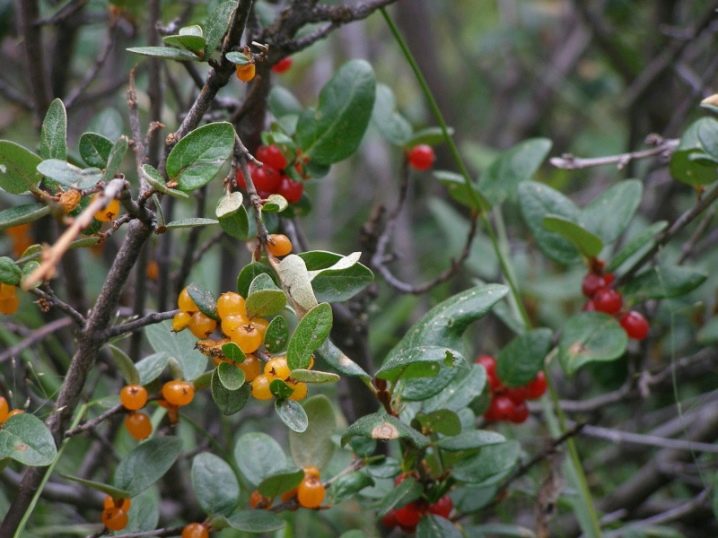
Canadian
Shepherdia canadensis in its appearance is more similar not to a shrub, but to a spreading tree, although not too tall. The bark on the branches is brown, and the leaves with a smooth surface are dark green in color. The lower part of the leaves is covered with yellow small outgrowths resembling scales and a silvery hair. In April, small flowers bloom on the plant, which have a yellow-green tint.
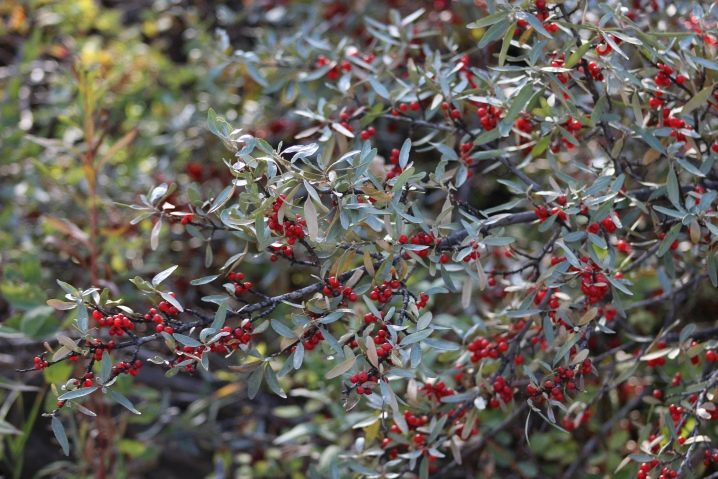
And by September, the berries, which have a dark red color, are already beginning to ripen. Ripe berries range in size from 4 to 8 millimeters. The shrub is considered to be very fertile. This variety can produce about 35 kilograms of berries every year, when the plant has already reached its peak. The yield of young specimens is not so significant and is approximately 15-25 kilograms.
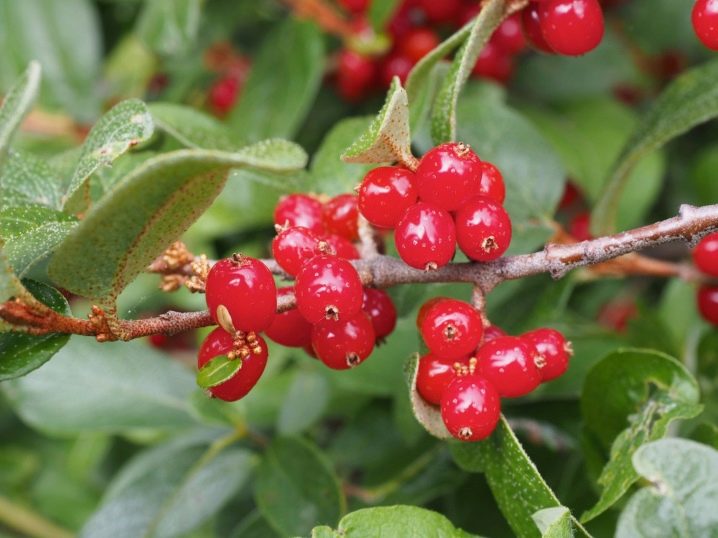
Round-leaved
Another type of culture is round-leaved shepherdia. An adult plant forms a sprawling and fairly tall shrub. The branches are intertwined rather tightly. The plant is very green, the leaves cover the branches densely, being as close to each other as possible. Warty growths are present on the leaf plates. This type of plant is noted by gardeners for excellent fruiting, abundant flowering and, accordingly, a significant harvest. On the territory of Russia, this species is quite rare, because the main place of growth is the Colorado plateau.

Landing
Several breeding methods can be used to plant a shepherd of any variety. Reproduction is distinguished among them. shoots, cuttings or seeds. You can transplant the plant a few years after planting on the land. Having risen a little in growth, plants can successfully move to new growing places.
Planting is not accompanied by any particular difficulties. First, a hole of 50x50x50 cm is prepared, its central part is filled with nutrient soil. A seedling is placed in the center, then soil is poured, slightly compacting. Next, the planted bush is watered and mulched.
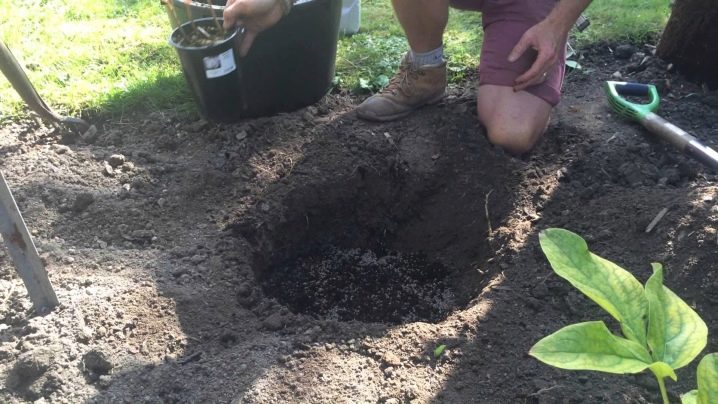
After planting, the seedling takes root quickly and responds well even to difficult weather conditions. Shepherdia is undemanding to the composition of the soil and therefore can grow and bear fruit, even if the soil is not very fertile.

Care
It is not difficult to take care of the Shepherdia bush. With proper cultivation, the bush will delight the owner for several decades. This plant adapts well to habitat conditions.He needs moderate watering, and in some cases, he may need to transplant the plant to a new place.
The plant does not like too much watering, so do not flood it. If the growth period falls on the rainy season, then this has a detrimental effect on the condition and growth of the shrub. A negative reaction is the stagnation of excess moisture in the root system.

In order for Shepherdia to develop and grow actively, it is necessary to remove excess grass on the land plot and periodically loosen the soil surface. The root system of this plant is located close to the surface, so loosening must be carried out with sufficient accuracy. This is the only way to keep the roots of the bush intact and at the same time provide the necessary care.
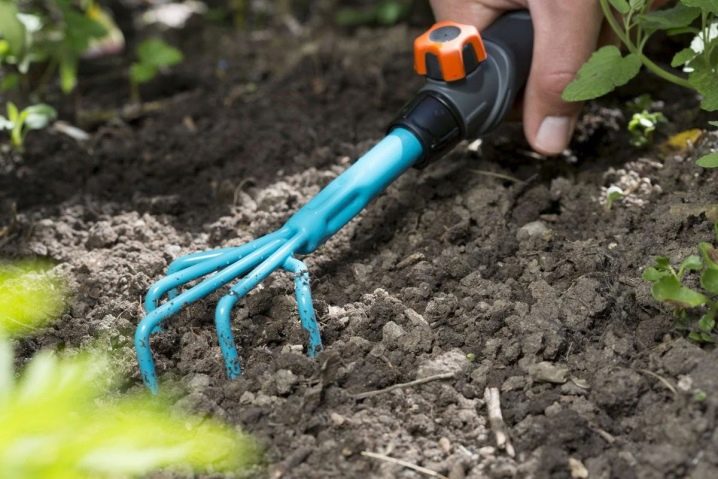
To form a beautiful bush, shepherdia needs to be cut from time to time. So that caring for this shrub does not bring significant problems, and harvesting is as convenient as possible, gardeners recommend limiting the height of the shrub to 2 meters and not allowing the plant to grow too much. Branches need to be thinned periodically. Otherwise, the shoots will begin to lean strongly to the ground and get tangled.
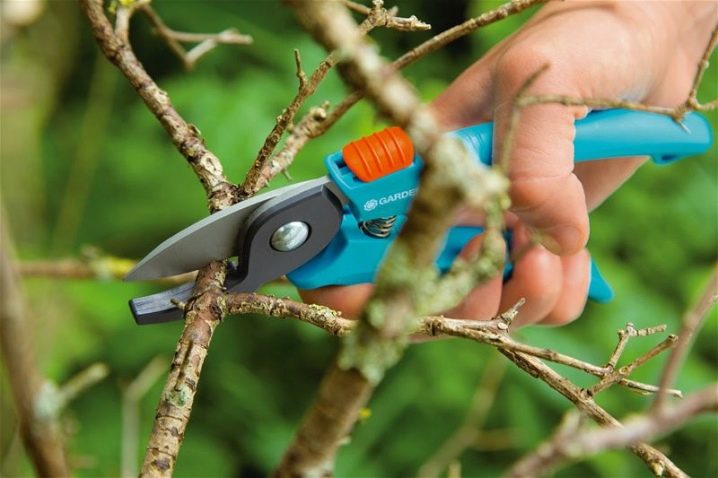
Reproduction
Reproduction of Shepherdia of any varieties can occur in several ways. The most successful and bringing high-quality rooting of the bush are the following methods:
- with the help of processes;
- rooting cuttings;
- sowing seeds.
By shoots
Every year, a certain number of "babies" are formed at the roots of the Shepherdia bush. Thanks to this, in late March or early April, there is the possibility of transplanting a young plant. In this case, you need to separate it from the main one. Transplanting is done by carefully separating the new roots from the old shrub. As a rule, a new young bush takes root quickly and after a couple of years it begins to yield a crop.

Cuttings
For the purpose of successful rooting, the choice is made in favor of green cuttings, on which at least a few buds are present. Typically, they range in size from 8 to 12 centimeters. In order for the cuttings to take root, it is recommended to keep them in "Kornevin" for the first day. After that, they must be transplanted into soil that has a sandy-peat composition.
Shoots should be deepened to a distance of about 5 centimeters. In September, usually towards the end of the month, the cuttings develop a fairly strong root system. And they can be planted in a prepared permanent place.
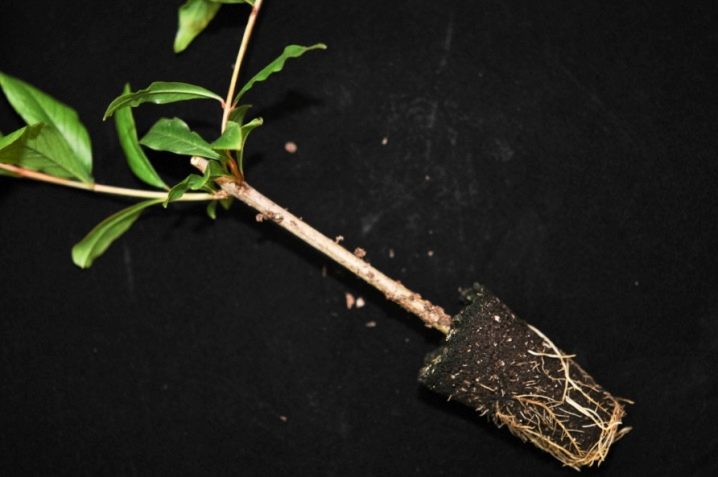
Seeds
Another breeding option for Shepherdia is sowing seeds. The seeds of this plant should be planted in November. This is done directly in the open ground. The seeds are planted in the soil when a hole is formed with a depth of about 2-3 centimeters. In winter, it is recommended to cover the area where shepherdia seeds are sown to prevent hypothermia. In early April, the first shoots begin to appear. The shrub grows quickly enough and already in the first year pleases the owner with abundant foliage. Fruiting will begin in a few years.
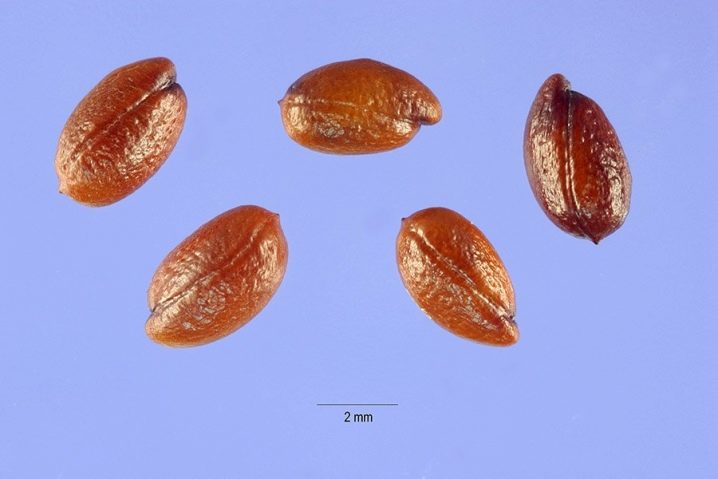
Application in landscape design
Since shepherdia has a decorative appeal, it is often used to decorate household plots. These shrubs are very beautiful and decorative, they can perfectly fit into the landscape, adding natural beauty to it. They look most interesting next to shrubs, which have reddish leaf plates. It can be barberry, weigela and others. Shepherdia also looks great in combination with conifers.
Low-growing species can be used to frame flower beds on the site.
Shepherdia shrubs represent attractive ornamental shrubs with numerous leaf blades that ennoble the site... This type of bushes allows you to make the site visually more protected or create a green fence for the entire perimeter.Shepherdia shrubs (of any variety) make an excellent hedge. It forms an attractive enclosure for any site. Since the branches are intertwined, the hedge is quite dense. You can plant Shepherdia either instead of the fence, or along its perimeter.
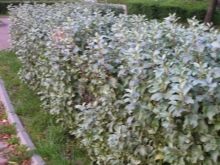
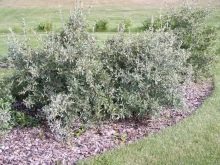
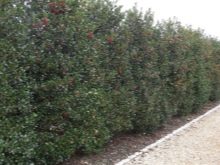
Shepherdia is a very beautiful ornamental shrub that looks attractive due to the intertwining of branches, small inflorescences and bunches of berries.... Giving a fairly bountiful harvest, the shrub is not only spectacular, but also useful.
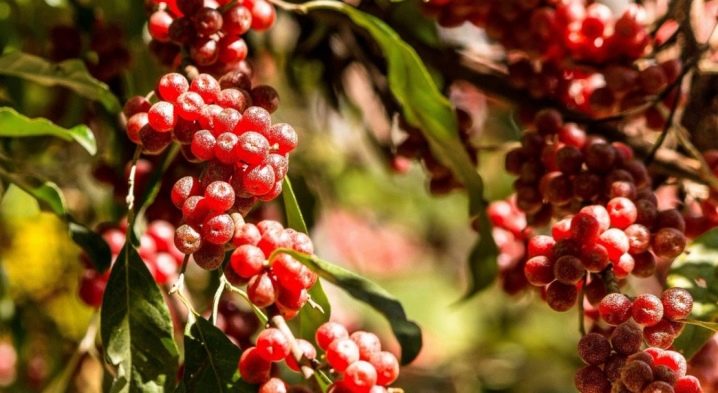



































































The comment was sent successfully.